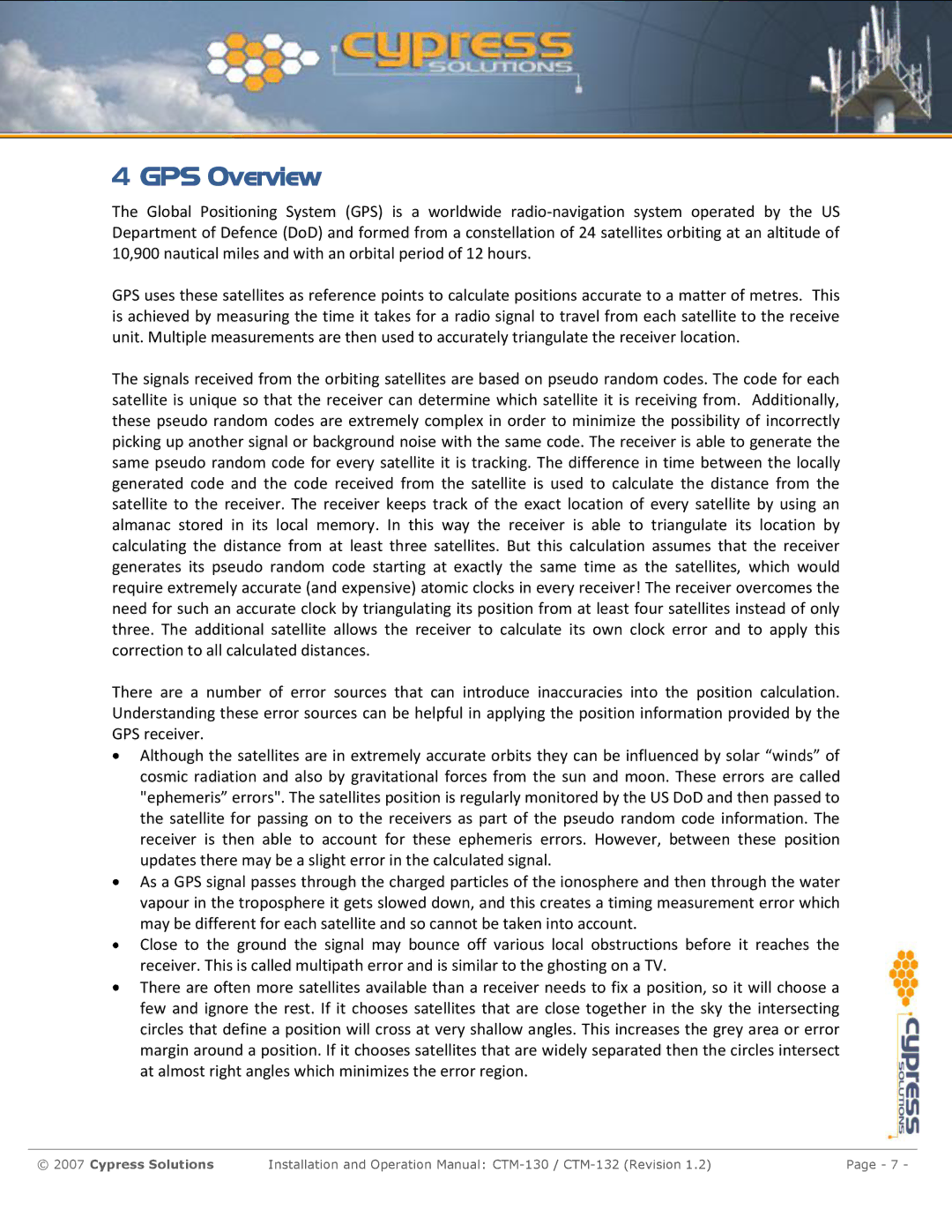
4 GPS Overview
The Global Positioning System (GPS) is a worldwide
GPS uses these satellites as reference points to calculate positions accurate to a matter of metres. This is achieved by measuring the time it takes for a radio signal to travel from each satellite to the receive unit. Multiple measurements are then used to accurately triangulate the receiver location.
The signals received from the orbiting satellites are based on pseudo random codes. The code for each satellite is unique so that the receiver can determine which satellite it is receiving from. Additionally, these pseudo random codes are extremely complex in order to minimize the possibility of incorrectly picking up another signal or background noise with the same code. The receiver is able to generate the same pseudo random code for every satellite it is tracking. The difference in time between the locally generated code and the code received from the satellite is used to calculate the distance from the satellite to the receiver. The receiver keeps track of the exact location of every satellite by using an almanac stored in its local memory. In this way the receiver is able to triangulate its location by calculating the distance from at least three satellites. But this calculation assumes that the receiver generates its pseudo random code starting at exactly the same time as the satellites, which would require extremely accurate (and expensive) atomic clocks in every receiver! The receiver overcomes the need for such an accurate clock by triangulating its position from at least four satellites instead of only three. The additional satellite allows the receiver to calculate its own clock error and to apply this correction to all calculated distances.
There are a number of error sources that can introduce inaccuracies into the position calculation. Understanding these error sources can be helpful in applying the position information provided by the GPS receiver.
Although the satellites are in extremely accurate orbits they can be influenced by solar “winds” of cosmic radiation and also by gravitational forces from the sun and moon. These errors are called "ephemeris” errors". The satellites position is regularly monitored by the US DoD and then passed to the satellite for passing on to the receivers as part of the pseudo random code information. The receiver is then able to account for these ephemeris errors. However, between these position updates there may be a slight error in the calculated signal.
As a GPS signal passes through the charged particles of the ionosphere and then through the water vapour in the troposphere it gets slowed down, and this creates a timing measurement error which may be different for each satellite and so cannot be taken into account.
Close to the ground the signal may bounce off various local obstructions before it reaches the receiver. This is called multipath error and is similar to the ghosting on a TV.
There are often more satellites available than a receiver needs to fix a position, so it will choose a few and ignore the rest. If it chooses satellites that are close together in the sky the intersecting circles that define a position will cross at very shallow angles. This increases the grey area or error margin around a position. If it chooses satellites that are widely separated then the circles intersect at almost right angles which minimizes the error region.
© 2007 Cypress Solutions | Installation and Operation Manual: | Page - 7 - |
